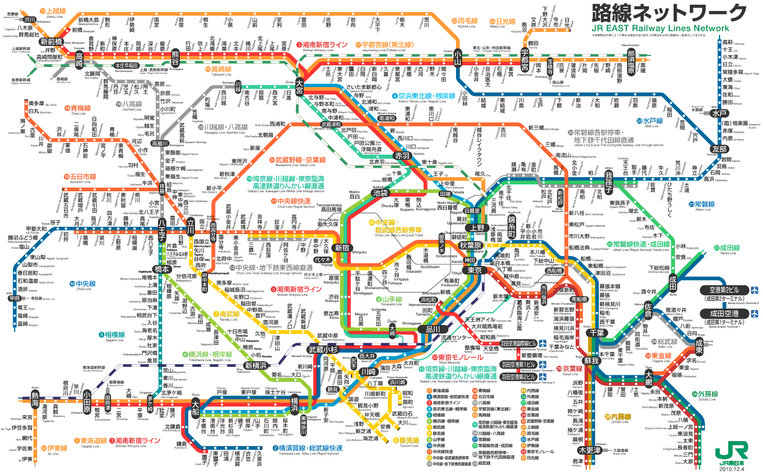This post builds on the research article “Tokyo’s Commuter Train Suicides and the Society of Emergence,” which was published in the May 2013 issue of the Society’s peer-reviewed journal, Cultural Anthropology.
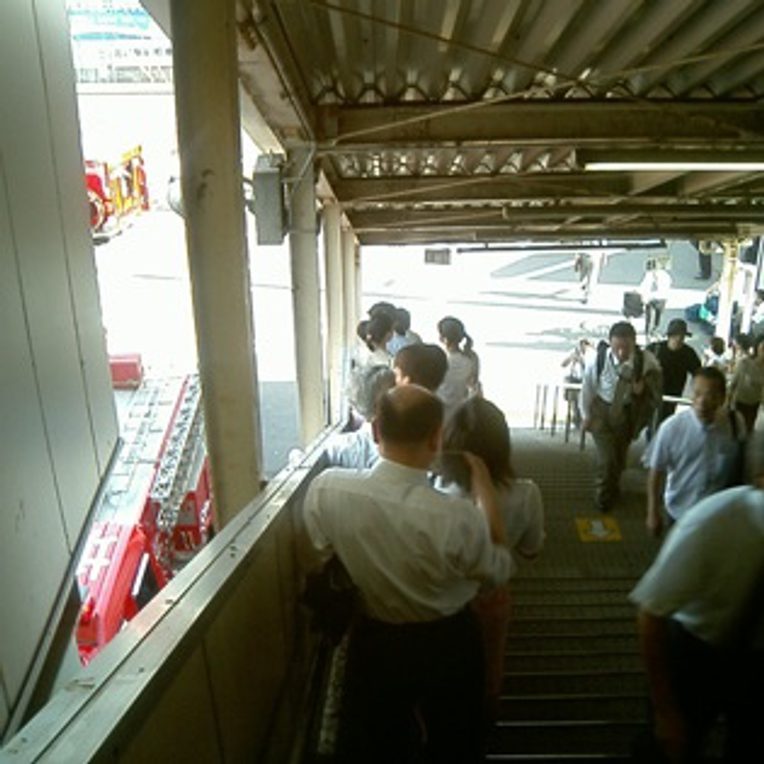
Editorial Footnotes
Cultural Anthropology has published numerous essays on culture and infrastructure which have been gathered in the Curated Collection on Infrastructure.
Cultural Anthropology has also published essays on the emergence of new forms of life at the intersections of culture, nature, and technoscience. See Stefan Helmreich’s "After Culture: Reflection on the Apparition of Anthropology in Artificial Life, a Science of Simulation" (2001), Emily Martin’s “The Ethnography of Natural Selection in the 1990s” (1994), Carlo Carduff’s “The Semiotics of Security: Infectious Disease Research and the Biopolitics of Informational Bodies in the United States” (2012), and Anne Allison’s “Cyborg Violence: Bursting Borders and Bodies with Queer Machines” (2001).
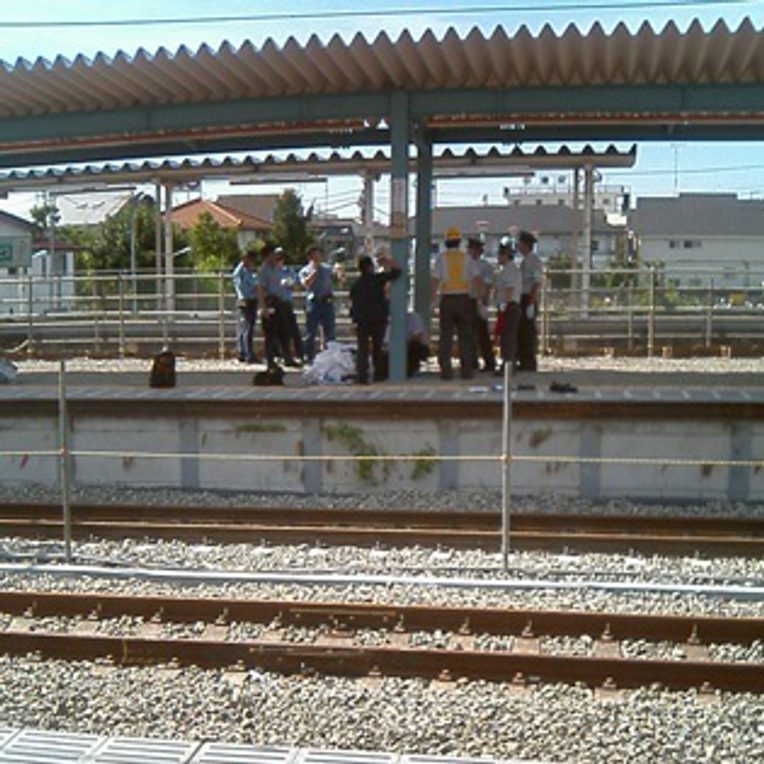
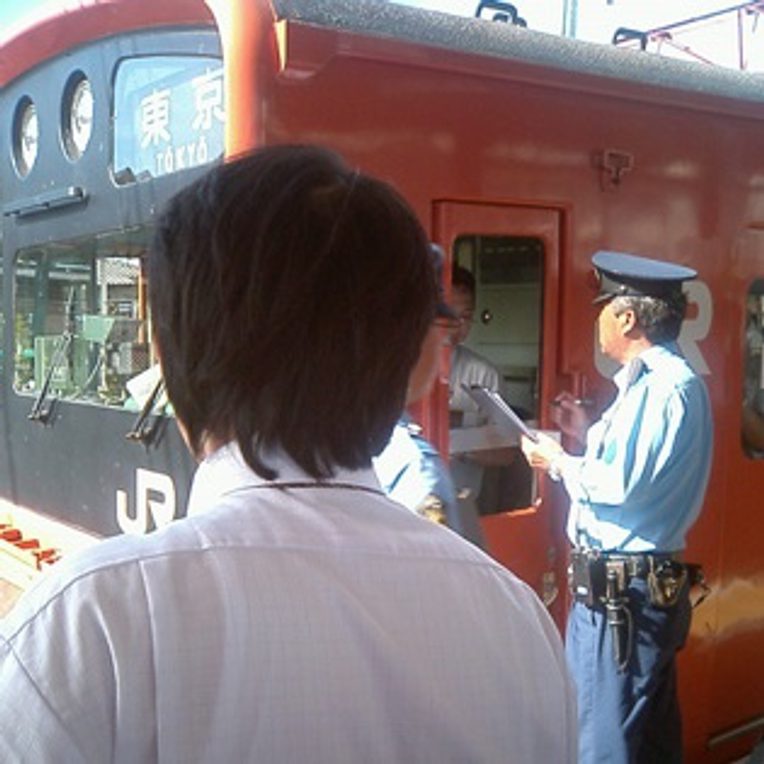
Interview with Michael Fisch
Grant Otsuki: How did you become interested in Japan, and the Japanese train system in particular, as a research area?
Michael Fisch: How I became interested in Japan is actually quite a long story involving years that I left academia to do other things in life. Suffice it is to say that my interest in Japan developed more by chance than anything else. The same is true to some extent for my decision to research the train system. When I embarked on preliminary fieldwork during graduate studies I knew I was interested in the relation between technology and culture. But it wasn’t until I missed the last train from Shinjuku back to my guesthouse on the western side of the city that I realized the train system could be my focus of inquiry. When I missed that train, as many people miss the last train every evening, I ended up wandering around Shinjuku all night as I waited for the first train at five in the morning. From that experience I became interested in the way in which the commuter train network informs the tempo of everyday life in the city. Specifically, I became interested in the lived reality of the temporal gaps in the system – the city that exists between the last train at night and the first train in the morning, and of course the spatiotemporal gaps that are part of the system diagram.
GO: Your essay provides a stunning account of the Tokyo train system as a techno-organic body, but also mentions the ‘cyborg city’ as a powerful and pervasive way of thinking of urban spaces. How do you see yourself intervening in these broader debates as an anthropologist?
MF: I would like to think that I’m trying to move us beyond the cyborg city paradigm. As a number of recent thinkers have pointed out, insofar as the cyborg metaphor was for many years an extremely productive way of blurring ontological boundaries between human and machine in order to open up new ways of thinking, it ultimately becomes problematic. On the one hand, in blurring those boundaries it conflates a generative difference born of the incommensurable quality of human and machine. That is to say, humans are not technology and it is because we are not technology that we need technology. Moreover, it is in the difference between the human and the technological that interesting things happen. On the other hand, as Thomas LaMarre points out in recent work, the move to blur boundaries engendered in the cyborg metaphor actually works to recuperate the very boundaries that the metaphor seeks to overcome.
GO: As your essay points out, ‘emergence’ has become a ubiquitous term, including in anthropology. Among other things, emergence points to the entanglement of the ethnographer him or herself with things as they happen in the field, as Bill Maurer has pointed out. How has your thinking about emergence developed over time? How have your encounters with ‘indigenous’ theories of emergence figured in this development?
MF: Emergence has indeed become a prevalent term and while I point to the cybernetic influence of the term in my article it would be hard to say that all articulations of emergence derive from that conceptual genealogy. Nevertheless, thinking emergence through its iteration vis-à-vis cybernetics has been productive for me in trying to theorize how emergence can work as a methodological approach for ethnography. Borrowing from Andrew Pickering’s work on cybernetics and thought, I would say that emergence asks us to move from a representational idiom of knowledge to a performative idiom of knowledge. A representational idiom of knowledge corresponds, I think, to a descriptive mode of engagement in anthropology, where the impulse is to generate exact accounts of a specific cultural formation. In this context, maintaining objectivity by preserving distance between the self and object of inquiry becomes a crucial aspect of “getting it right” (to borrow from Kristen Hastrup, 2004). By contrast, a performative idiom of knowledge acknowledges, as Maurer suggests, the entanglement of the ethnographer with the field. This shifts the burden of inquiry from producing an objective description to thinking the relations one encounters in the field in ways that produce new analytics. As for ‘indigenous’ theories of emergence, I’m part of a workshop that is looking into this topic right now so you’ll have to stay tuned for an answer on that one.
GO: Japan Rail (JR) would appear to be precisely the type of organization that would not be very welcoming to an ethnographer, for security reasons among many others. What was the process through which you gained access, and what limitations and affordances did you have to work with? How did your interlocutors perceive you?
MF: JR is actually very eager to promote a positive public image and thus welcomes attention. But this also means that they are not eager to talk about the commuter suicide problem. For many years in fact they made it very difficult to find data on the topic. As you might imagine, I did not manage to get far with them on the topic by following official channels and my first interview with a JR East public relations representative was clearly cut short when I began asking questions regarding procedure around commuter suicides. But I found an alternative path into the organization by teaching English to researchers at the Railway Technical Research Institute in Kunitachi, which works closely with all the JR companies, especially JR East. I learned a lot from them and they organized interviews for me with key individuals as well as secured my visit to the network’s central command room.
GO: You make the intriguing move of asking, at the beginning of your essay, how does the commuter train network think. Later you talk about “Autonomous Decentralized Transport Operation Control System” (ATOS) as something that speaks and listens to commuters. What were the challenges of doing ethnography with this not-completely-human form of ‘life’? How do you position your approach in relation to other anthropological attempts to make sense of non-human life and humanity’s relationship to it?
MF: Like many anthropologists who look at human and non-human relations my thinking has been very influenced by Bruno Latour. In some ways it is impossible to do this kind of work without being something of a Latourian. But my approach in this regard has also become informed in recent years by some of the scholars whose influences one can see at work in many of Latour’s conceptualizations of human/non-human, human/technological relations. I’m referring here not only to Gilles Deleuze and Felix Guattari but also Gilbert Simondon, whose work seems to be gaining increasing recognition (among English readers) lately as a way of re-conceptualizing techne. Discovering Simondon, who I initially encountered through Adrian Mackenzie’s work on the notion of transduction, has been hugely helpful for me in developing an approach to the commuter train network that moves beyond tropes of human versus machine as well as human-machine cyborg metaphors. What all these thinkers of techne underscore is the relation between technology and thought, that is, how technology becomes a problem of thinking but also how technology and thinking become associated thresholds.
GO: Your essay ends with the lament that the Tokyo train system has homeostasized as a body that leaves little room for the fleshy intensities and specifities of people and their bodies. At the same time, you show that this system is incredibly efficient at containing the disruptions of jinshin-jiko as an integral part of the dynamics maintaining the technosocial body as a whole. Where do you sense possibilities for thinking and materializing the techno-social body differently, in ways that would be “generative and inspiring”?
MF: The ATOS system is truly amazing and I have nothing but the greatest respect for the scientists and engineers who created it. As I tried to make clear in the essay, these scientists don’t see themselves as merely tackling a technological problem but rather addressing a social condition by creating a system that will enable the imminent potential of individuals and the overall collective. The problem that I have with ATOS and the model of emergence that it realizes is that it corresponds ultimately to an informational premise whereby life is imagined as reducible to information processing. As such, it collapses the boundaries between the biological, technological, and social, operating under the assumption that all three are subsumable to a common logic of communication and control. Drawing from some of the work on Simondon there is a different kind of emergence that we can think of that would recuperate these boundaries and thus the generative difference between them by taking into account not just the role of information but also the specificities of material – flesh, metal, and so on – that are enmeshed in living processes.
GO: How does this essay fit into your research as a whole? What other ideas do you explore in your work?
MF: The essay is a combination of themes and concerns from the second chapter and final (fifth) chapter of my monograph in progress entitled, An Anthropology of the Machine: Tokyo’s Commuter Train Network. In the book I’m able to attend to some of what gets left out of this article, which is the lived experience of commuters who deal with these commuter suicides day after day. In general, the book puts the conceptualization and re-conceptualization of indeterminacy in the traffic diagram at the center as it seeks to understand the culture and experience of commuting in Tokyo. As such I explore how Tokyo’s redesigned commuter train network exists in tension and correspondence with the sedimented practices and machineries that have been part of everyday life in Tokyo for over a century. In addition, I ask how these tensions and correspondences inform and reshape such quintessential urban phenomena as the packed commuter train, structures of labor, modes of representation, and expressions of intimacy. And in so doing I tell a story that is about the lived experience of Tokyo’s commuter train network and its commuter culture but also, in many ways, the story of our contemporary techno-social global condition.
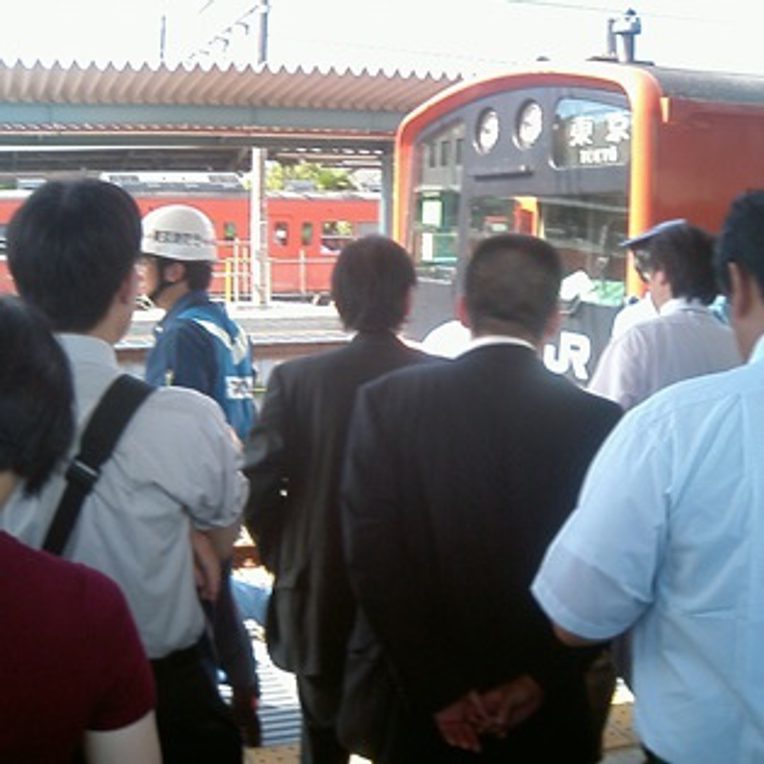
Related Readings
(See also the links embedded in the text.)
Mackenzie, Adrian. Transductions: Bodies and Machines at Speed. London & New York: Continuum, 2002.
Maurer, Bill. "Introduction to "Ethnographic Emergences"". American Anthropologist107.1(2005):1-4.
Pickering, Andrew. The Cybernetic Brain: Sketches of Another Future. Chicago: University of Chicago Press, 2010.
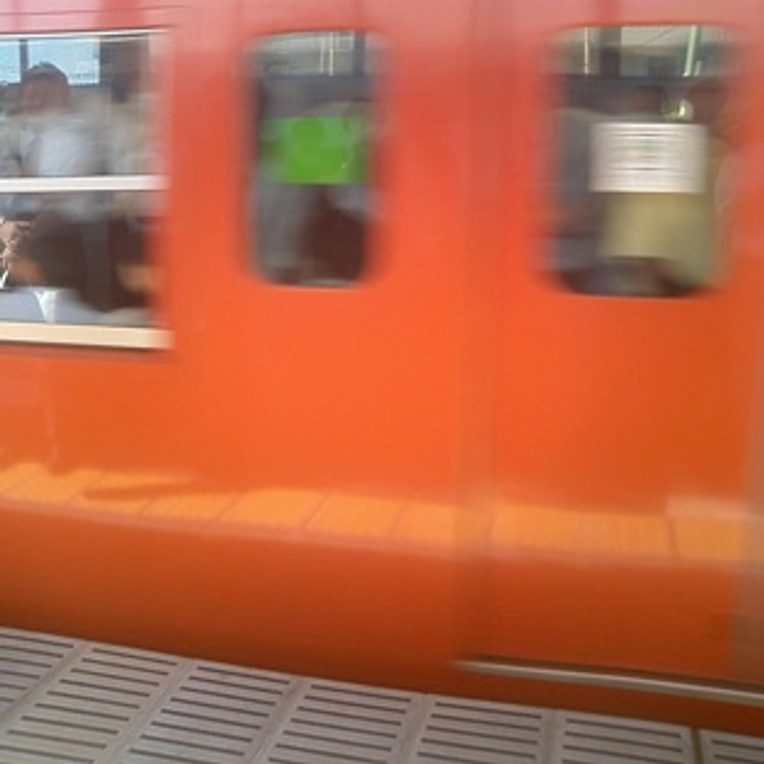
Questions for Classroom Discussion
1. What is a “cyborg city”? How does it differ from earlier ways of thinking about cities? Why is “chaos” important for a cyborg city?
2. What did “sui generis” mean for Durkheim? How is it related to the phenomenon of suicide? How is it connected to ideas of “emergence”?
3. Fisch writes “What we find with ATOS is not a model of emergence but rather an attempt to instantiate emergence that begins with a shifting political economy and the problem of infrastructure resilience.” What does “a model of emergence” mean, and how is it linked to Sawyer’s argument that “We have always been a society of emergence”?
4. As Fisch points out, the Tokyo train system does not work on the principle of “absolute precision” but “enfolds a margin of indeterminacy that allows it to be both precise and imprecise.” How is this demonstrated in the example of the “daiya”? How is “indeterminacy” of the train system related to how it is viewed as a kind of biological system?
5. Much of Fisch’s essay has to do with how scientists define ‘life’. What are some of the effects (social, economic, political, etc.) of understanding things like the train system or cities as forms of life? What does “life as surplus” mean? What kinds of political, economic, and social changes does this statement refer to? How is this idea instantiated in the Tokyo train system?
6. Fisch writes that the Tokyo train system operates so as to relegate the disorder of commuter train suicides to “background noise”. In your own town or city, what kinds of "crises" or "emergencies" are similarly pushed into the background? What technical and social systems make this possible?
7. Several terms appear in the essay – for example, “flexibility”, “autonomy”, “resilience” – with which the train system becomes thinkable to the researchers as a form of living system. Where else do you see similar connections being made between biological and technological systems? (For example, statements like “The brain is a computer.”)

